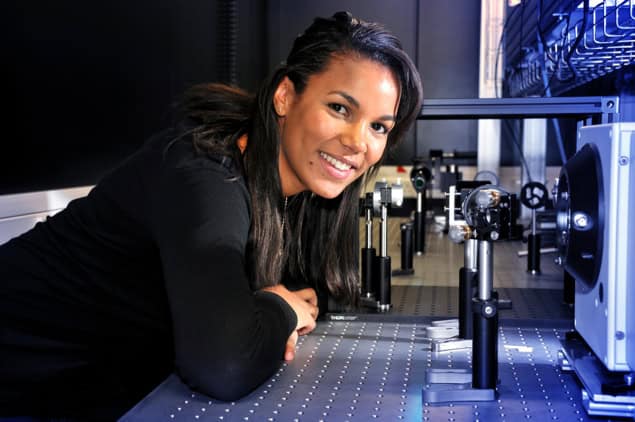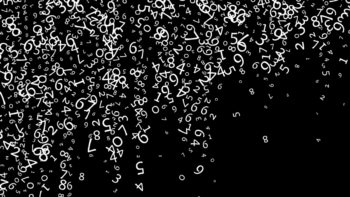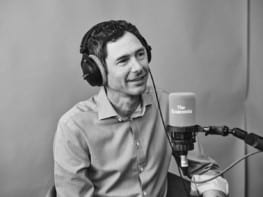Diagnostics physicist Lorraine Bobb explains how a summer placement at Diamond Light Source helped her make an evidence-based decision about her career path

As I look back on the choices I have made in my career, I’m coming to the conclusion that I have always been fascinated by speed. When my friends and I discussed career ideas as early as secondary school, my preferences went along the lines of: astronaut, RAF pilot or Formula 1 engineer. All of these jobs sounded exciting, hands-on and challenging. I quickly decided that studying physics would be beneficial, regardless of which career option I chose to pursue.
After completing my A-levels, I went on to do an MSci physics degree at Royal Holloway, University of London (RHUL). At this time I was a keen sportswoman, and had secured a place on the Student Talented Athlete Recognition Scheme (STARS) at RHUL for athletics and skeleton – a sport where a person slides head-first down an ice track, while lying face-down on a small bobsled. I learned the importance of good time management and self-motivation while balancing both my academic and sporting commitments. From skeleton-sliding in particular, I learned how to channel any stress I felt as I stood at the top of the track into focus, and being able to give my best performance, even under pressure.
Particle fascination
Academically, I found myself drawn towards the field of particle physics. I was intrigued by the Standard Model of particle physics, especially the then-ongoing search for the Higgs boson at the Large Hadron Collider at CERN. I was also captivated by the observation of neutrino interactions by the IceCube experiment. However, particle physics didn’t seem to offer the hands-on lab work I enjoyed to break up the humdrum of sitting at a desk all day, studying theory and analysing data. As I mulled over this problem, I realized that behind each great experimental discovery, there must be a lab or facility where the experiment itself was conducted. It was at this point that I entered the realm of accelerator physics and beam diagnostics – the marriage between particle physics and engineering where particles travel at nearly the speed of light.
I wanted to make an evidence-based decision before choosing accelerator physics as a full-time career. With this goal in mind, I chose undergraduate courses relating to particle accelerators and detectors. At RHUL, I did a summer placement on acoustic imaging of electron beams to further my laboratory skills and to network with other lecturers and students in similar research areas. I completed my Master’s thesis on accelerator optimization at the Compact Linear Collider using different beam-steering techniques. Although I had visited CERN, I still wasn’t sure what it would be like to work at a particle accelerator full time.
Diamond ring
Growing up in the area, I was aware of the “silver doughnut” on the rolling hills of Oxfordshire. It was much later that I learned this building housed Diamond Light Source – a third-generation synchrotron light source, with a series of X-ray beamlines that study atoms and molecules. In the summer of my third year, I sent my application to Diamond, with my fingers crossed that I would get a response. Unfortunately, it was not the response I was hoping for – I was told that Diamond was not taking on any summer students that year. However, knowing how crucial it was for my future plans, I persisted.
That summer I gained first-hand experience of everyday life at a particle accelerator
Via contacts at RHUL, I got in touch with the physicists at Diamond and let them know that I was prepared to work for no pay on more or less anything relating to the accelerator. Very soon after, the Diagnostics group at Diamond contacted me directly with an invitation for a paid internship working with them – and this was ultimately my big break. That summer, I developed a portable scanning knife-edge system for stability measurements on beamlines and I gained first-hand experience of everyday life at a particle accelerator. Most importantly though, I thoroughly enjoyed my entire experience. I had finally proven to myself that this was the career I wanted.
The next step was to further my knowledge and expertise. I did a PhD that involved designing, building and testing a transverse beam size monitor using diffraction radiation on circular machines. Although it was a collaborative project between RHUL and CERN, I was based at CERN in Switzerland full-time. Initially, living abroad was very daunting (especially as I didn’t speak French), but in time I became much more independent. By the end of my PhD, I was very proud of the life I had established over the three years.
Lessons learned
In this time, I was lucky enough to travel to many countries around the world. All of the experimental tests for my PhD were done at the Cornell Electron Storage Ring (CESR) in the US. Often, I would be sent to Cornell University weeks ahead of the rest of the team to prepare for our shifts on the accelerator. Along with my technical knowledge, I learned how to manage a project that involved a lot of people and resources. I found that no-one can be expected to know everything, which is why teamwork is so important. Each person has their own area of expertise, and through a collective effort, we get to the finish line. During my time at CERN, I also had the opportunity to present my work at international conferences and to attend the annual CERN Accelerator School, which is hosted in a different member state each year. In this way, I was able to improve my presentation skills and to network face-to-face with many people at various stages of their careers.
Each day, I look for ways to improve the measurements I provide by doing my own research in the lab, on the accelerator, and with external collaborators
After my PhD, I returned to Diamond, where I now work as part of the Diagnostics group. I design and operate instruments that are effectively the eyes and ears of the accelerator and make sure that all 28 operational beamlines have access to high-quality X-rays for their non-stop, 24/7 experiments. Each day, I look for ways to improve the measurements I provide by doing my own research in the lab, on the accelerator, and with external collaborators. The best part of my job is the variety of issues that need to be solved and the opportunities to share my work, and that of Diamond, with the public through outreach events.
Diamond now has a well-established Student Summer Placement programme, which allows undergraduate students in science and engineering to gain first-hand experience of working at a leading scientific facility. I’d encourage anyone starting out in physics to do a summer internship at a working facility in the branch of physics they’re interested in. You may end up returning to that same place of work as a member of staff as I have done, or to continue your studies. Or you may learn that actually, the career path you were following isn’t the right one for you. This is still a positive outcome. You’ve been able to direct your career based on evidence, and as a physicist, having data to support a theory is key.



